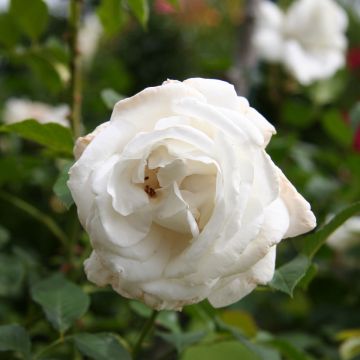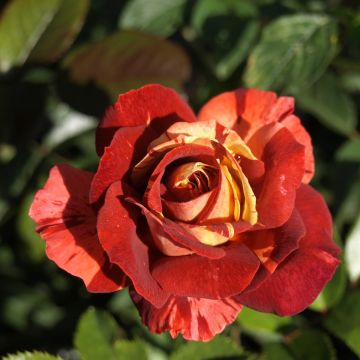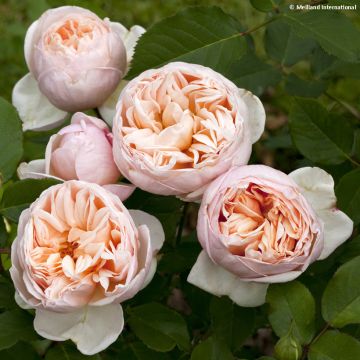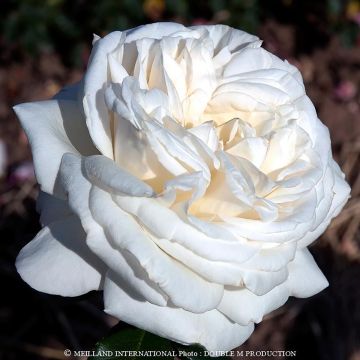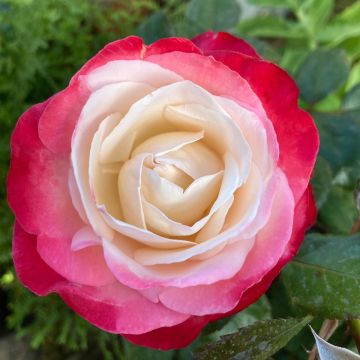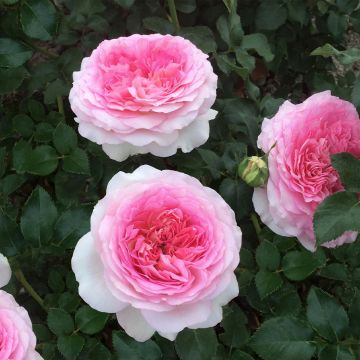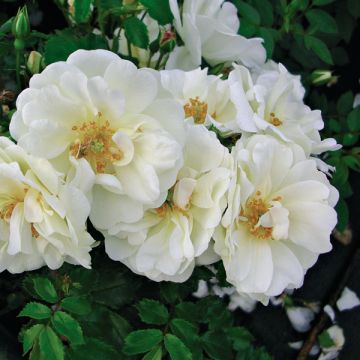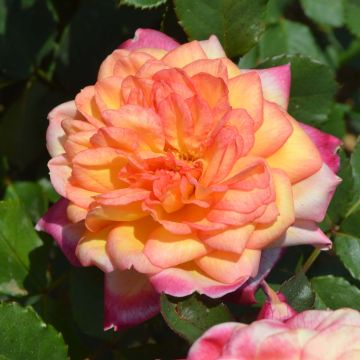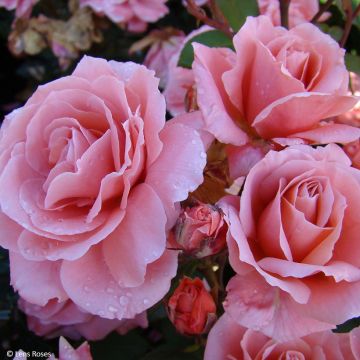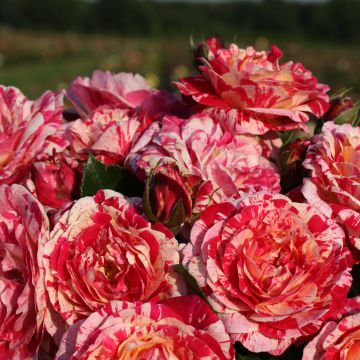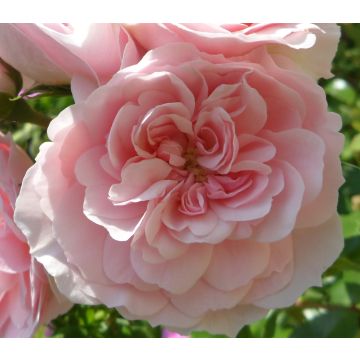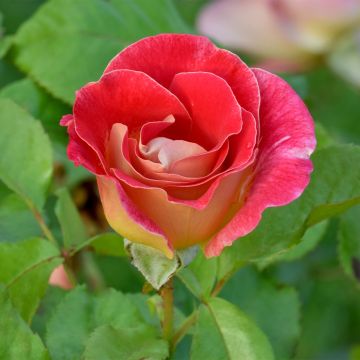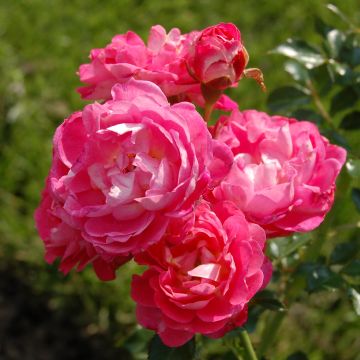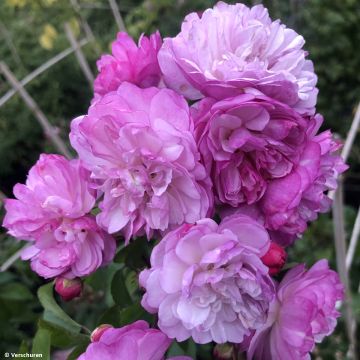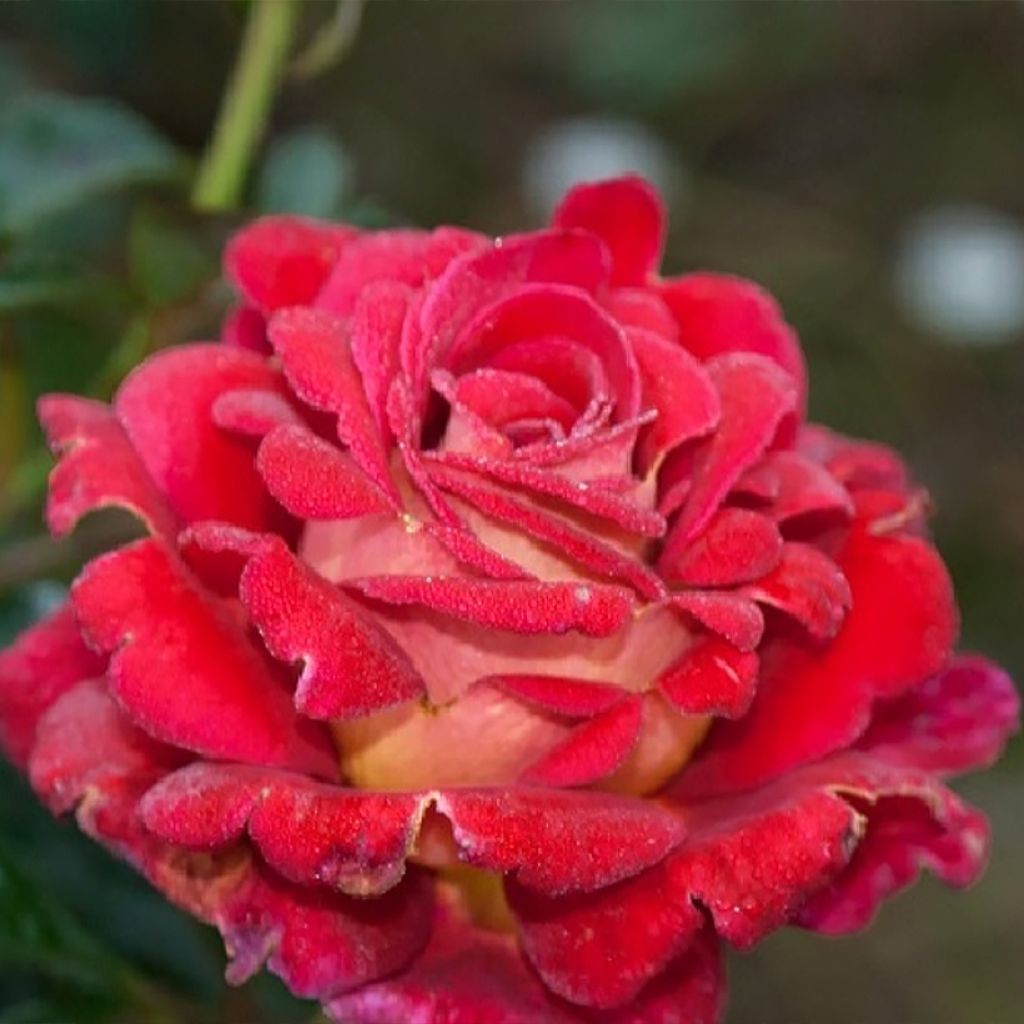

Rosa Macha Meril
Rosa Macha Meril
Rosa Macha Meril® 'Adalegour'
Rose
This item cannot be shipped to the selected country
Delivery charge from €5.90
Delivery charge from €5.90
Delivery to Corse prohibited
More information
Schedule delivery date,
and select date in basket
This plant carries a 24 months recovery warranty
More information
We guarantee the quality of our plants for a full growing cycle, and will replace at our expense any plant that fails to recover under normal climatic and planting conditions.
From €5.90 for pickup delivery and €6.90 for home delivery
Express home delivery from €8.90.
From €5.90 for pickup delivery and €6.90 for home delivery
Express home delivery from €8.90.
Delivery to Corse prohibited: UE law prohibits the import of this plant from mainland France to Corse as part of the fight against Xylella fastidiosa. Please accept our sincere apologies.
More information
Does this plant fit my garden?
Set up your Plantfit profile →
Description
The Macha Meril® Rose ('Adalegour') (Copacabana®) is a modern hybrid tea rose with very fragrant velvety flowers in a deep red colour. Vigorous and highly floriferous, it forms a bush with glossy foliage that is resistant to diseases. Its large, fully double, turbinate flowers are a sumptuous intense red, with a yellow sulphur reverse. They exude an intense and fruity fragrance. With almost one flower per stem, this upright bush provides excellent flowers for bouquets.
The 'Macha Meril' Rose is also marketed internationally under the name 'Copacabana'. It was bred by Michel Adam in 2004. It is a beautiful bushy shrub that reaches a height of about 1.10m (4ft) with a spread of 60 to 70cm (24 to 28in) at maturity, with vigorous growth. It produces strong branches that bear healthy foliage in a shiny dark green colour. Throughout the summer and until the onset of autumn, if faded flowers are removed, the plant produces numerous buds that open into large double flowers. They are turbinate, typical of hybrid tea roses, and have a deep red color with a yellow sulphur reverse. Most often solitary, they are borne at the end of long shoots from the current year or emerge from 2-year-old stems. The repeat flowering is also distinguished by a very pronounced, rather fruity fragrance.
The 'Macha Meril' Rose generously offers its refined bicoloured flowers on a dense and upright bush, ideal for flower beds, hedges, solitary planting, or planted in groups of 3, in borders. Pair it with yellow roses to echo the reverse of its flowers. In a flower bed, plant it with tall Phlox, Penstemons, and blue or purple Sages. Combine it with the silver foliage of Wormwoods for a sophisticated association with its velvety red flowers. Its cut flowers, long-lasting, are perfect for bouquets.
Report an error about the product description
Plant habit
Flowering
Foliage
Botanical data
Rosa
Macha Meril® 'Adalegour'
Rosaceae
Rose
Cultivar or hybrid
Other Large-flower tea Roses
Planting and care
Plant your 'Macha Meril' Rose bush in a sunny or lightly shaded location. Modern roses are tolerant, but do not appreciate excessive limestone. They will adapt to any garden as long as the soil is well-worked, not too heavy, and sufficiently rich. To install your rose bush, work the soil by crumbling it and place an amendment, such as dried blood or dehydrated horn, at the bottom of the planting hole. Water generously after planting to remove any air pockets. Water regularly for a few weeks to facilitate root establishment.
Pruning modern perpetual roses is essential for flowering. It is done in three stages:
1. Maintenance pruning: regularly shorten the flowering shoots during the season. To encourage reblooming, remove faded flowers along with their stem, leaving 2 or 3 leaves.
2. Preparatory autumn pruning: light pruning that anticipates the proper spring pruning. In regions with cold winters, it is not recommended to avoid weakening the bush.
3. Spring pruning: in February-March, when the buds have become shoots that are 2 to 3cm (1in) long, prune the young strong branches to one-quarter of their length.
Pruning always aims to open up the centre of the bush and remove dead wood, diseased branches, and weak shoots. The most vigorous ones will be retained, typically 3 to 6 well-positioned branches, to maintain an attractive habit. Always prune at a slight angle, ½ cm or 1cm above an outward-facing bud.
Roses are often stained or unsightly at the end of summer, but this is not a problem for their development. These spots are not harmful to the rose bush, it is a natural phenomenon.
Planting period
Intended location
Care
-
, onOrder confirmed
Reply from on Promesse de fleurs
Roses by producer
Haven't found what you were looking for?
Hardiness is the lowest winter temperature a plant can endure without suffering serious damage or even dying. However, hardiness is affected by location (a sheltered area, such as a patio), protection (winter cover) and soil type (hardiness is improved by well-drained soil).

Photo Sharing Terms & Conditions
In order to encourage gardeners to interact and share their experiences, Promesse de fleurs offers various media enabling content to be uploaded onto its Site - in particular via the ‘Photo sharing’ module.
The User agrees to refrain from:
- Posting any content that is illegal, prejudicial, insulting, racist, inciteful to hatred, revisionist, contrary to public decency, that infringes on privacy or on the privacy rights of third parties, in particular the publicity rights of persons and goods, intellectual property rights, or the right to privacy.
- Submitting content on behalf of a third party;
- Impersonate the identity of a third party and/or publish any personal information about a third party;
In general, the User undertakes to refrain from any unethical behaviour.
All Content (in particular text, comments, files, images, photos, videos, creative works, etc.), which may be subject to property or intellectual property rights, image or other private rights, shall remain the property of the User, subject to the limited rights granted by the terms of the licence granted by Promesse de fleurs as stated below. Users are at liberty to publish or not to publish such Content on the Site, notably via the ‘Photo Sharing’ facility, and accept that this Content shall be made public and freely accessible, notably on the Internet.
Users further acknowledge, undertake to have ,and guarantee that they hold all necessary rights and permissions to publish such material on the Site, in particular with regard to the legislation in force pertaining to any privacy, property, intellectual property, image, or contractual rights, or rights of any other nature. By publishing such Content on the Site, Users acknowledge accepting full liability as publishers of the Content within the meaning of the law, and grant Promesse de fleurs, free of charge, an inclusive, worldwide licence for the said Content for the entire duration of its publication, including all reproduction, representation, up/downloading, displaying, performing, transmission, and storage rights.
Users also grant permission for their name to be linked to the Content and accept that this link may not always be made available.
By engaging in posting material, Users consent to their Content becoming automatically accessible on the Internet, in particular on other sites and/or blogs and/or web pages of the Promesse de fleurs site, including in particular social pages and the Promesse de fleurs catalogue.
Users may secure the removal of entrusted content free of charge by issuing a simple request via our contact form.
The flowering period indicated on our website applies to countries and regions located in USDA zone 8 (France, the United Kingdom, Ireland, the Netherlands, etc.)
It will vary according to where you live:
- In zones 9 to 10 (Italy, Spain, Greece, etc.), flowering will occur about 2 to 4 weeks earlier.
- In zones 6 to 7 (Germany, Poland, Slovenia, and lower mountainous regions), flowering will be delayed by 2 to 3 weeks.
- In zone 5 (Central Europe, Scandinavia), blooming will be delayed by 3 to 5 weeks.
In temperate climates, pruning of spring-flowering shrubs (forsythia, spireas, etc.) should be done just after flowering.
Pruning of summer-flowering shrubs (Indian Lilac, Perovskia, etc.) can be done in winter or spring.
In cold regions as well as with frost-sensitive plants, avoid pruning too early when severe frosts may still occur.
The planting period indicated on our website applies to countries and regions located in USDA zone 8 (France, United Kingdom, Ireland, Netherlands).
It will vary according to where you live:
- In Mediterranean zones (Marseille, Madrid, Milan, etc.), autumn and winter are the best planting periods.
- In continental zones (Strasbourg, Munich, Vienna, etc.), delay planting by 2 to 3 weeks in spring and bring it forward by 2 to 4 weeks in autumn.
- In mountainous regions (the Alps, Pyrenees, Carpathians, etc.), it is best to plant in late spring (May-June) or late summer (August-September).
The harvesting period indicated on our website applies to countries and regions in USDA zone 8 (France, England, Ireland, the Netherlands).
In colder areas (Scandinavia, Poland, Austria...) fruit and vegetable harvests are likely to be delayed by 3-4 weeks.
In warmer areas (Italy, Spain, Greece, etc.), harvesting will probably take place earlier, depending on weather conditions.
The sowing periods indicated on our website apply to countries and regions within USDA Zone 8 (France, UK, Ireland, Netherlands).
In colder areas (Scandinavia, Poland, Austria...), delay any outdoor sowing by 3-4 weeks, or sow under glass.
In warmer climes (Italy, Spain, Greece, etc.), bring outdoor sowing forward by a few weeks.

































